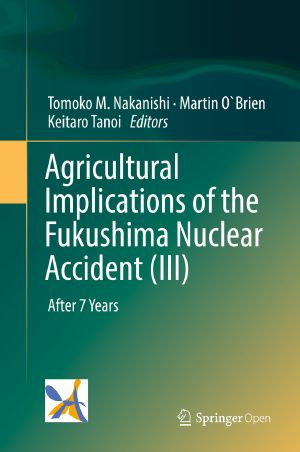Agricultural Implications of the Fukushima Nuclear Accident (III), After 7 Years

- Authors
- Tomoko M. Nakanishi & Martin O`Brien & Keitaro Tanoi & Tomoko M. Nakanishi & Keitaro Tanoi
- Publisher
- Springer
- Date
- 2013-03-15T00:00:00+00:00
- Size
- 48.61 MB
- Lang
- en
Following the Fukushima nuclear accident, a large volume of monitoring data has been collected about the soil, air, dust, and seawater, along with data about an immense number of foods supplied to the market. Little is known, however, about the effect of radioactive fallout on agriculture, information about which is vital. Although more than 80% of the damaged area is related to agriculture, in situ information specifically for agriculture is scarce. This book provides data about the actual movement and accumulation of radioactivity in the ecological system—for example, whether debris deposited on mountains can be a cause of secondary contamination, under what conditions plants accumulate radioactive cesium in their edible parts, and how radioactivity is transferred from hay to milk. Because agriculture is so closely related to nature, many specialists with different areas of expertise must be involved in answering these questions. In the case of rice, researchers in rice cultivation as well as in soil, hydrology, and radioactivity measurement are working together to reveal the paths or accumulation of radioactivity in the field. For this purpose, the Graduate School of Agricultural and Life Sciences of The University of Tokyo has diverse facilities available throughout Japan, including farmlands, forests, and meadowlands. Many academic staff members have formed groups to conduct on-site research, with more than 40 volunteers participating. This book presents the data collected from the only project being systematically carried out across Japan after the Fukushima accident.